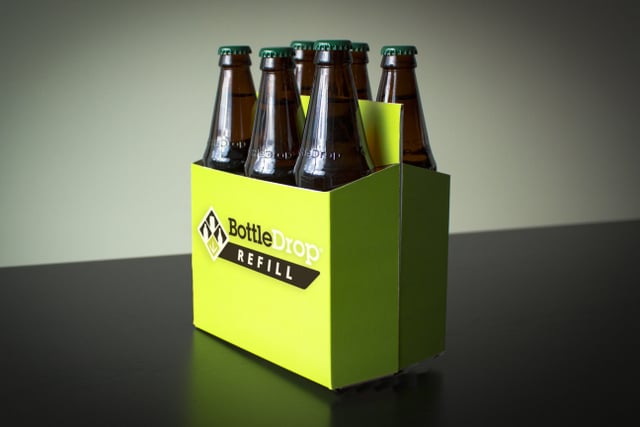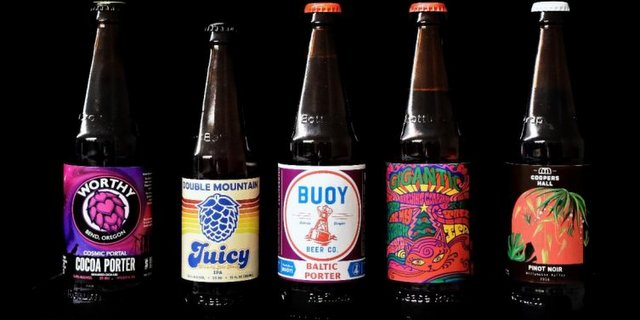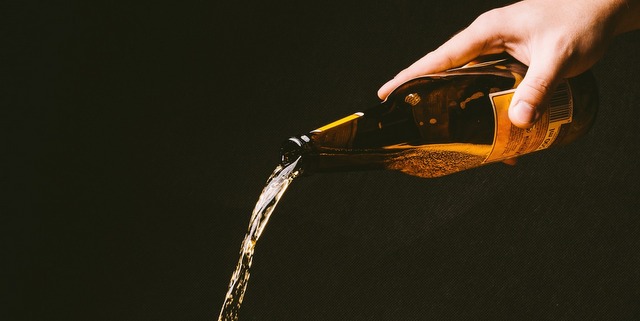
In mid-August, we worked with Stefan Grober for a story on refillable/returnable bottle options for craft brewers. Grober is an R&D application fellow with Diversey’s Food & Beverage division, which just launched a bottle protection system, BottleCare, that significantly enhances the lifespan of refillable bottle fleets. Grober talked about the challenges and payoffs of refillable bottles. The scale of investment required is significant, but it can have payoffs as it relates to sustainability, market differentiation, increased consumer loyalty and ROI in the long run.
As we ran the story, I thought to myself: What beer companies in America are even using refillable bottles? CBS noted their near extinction in 2010, the same year D.G. Yuengling & Son announced it was done with refillables.
But, I was actually quite surprised that refillables are making a bit of comeback. Returnable bottles started to make headlines again in 2016 when Straub Brewery decided to resurrect its 16-ounce refillable “Pounder,” which would end up winning an environmental leadership award from the Pennsylvania Resources Council. This is what Straub said back then.
The brewery uses a traditional bottle washing machine to clean the returned glass bottles and prepare them for refilling. Also, heavy-duty, reusable cardboard cases and dividers enable the brewery to minimize the amount of new packaging material. Straub Returnables are known to be an environmentally sustainable product, produced by an American Legacy Brewery™ in the PA Wilds™ region of the state. And through a new partnership with Owens-Illinois — the world’s leading glass-packaging maker — the Straub returnable bottle will endure for generations to come.
That retro refillable attitude is gaining more traction — specifically in Oregon. The Oregon Beverage Recycling Cooperative is currently in full swing with a returnable bottle program that has seven state craft breweries on board — Widmer Brothers, Buoy Beer, Double Mountain, GoodLife, Gigantic, Wild Ride and Rock Bottom. Oregon State laws and administrative rules require that retailers who sell beverages accept eligible empty containers from consumers who return them for a refund (10 cents). It also requires distributors to pick up those containers and reimburse the retailer, so the cooperative already has a sturdy infrastructure in place for collecting these bottles.

“The cooperative has been around for quite a while, but we really kind of became more public as we introduced the BottleDrop redemption centers in 2011. Today, there’s 24 BottleDrop redemption centers around the state,” said Joel Schoening, community relations manager with the Oregon Beverage Recycling Cooperative. “We collect almost every bottle and can redeem through the deposit system in the state of Oregon. This year we think that’ll be about 2 billion bottles and cans. That represents well over an 80 percent return rate, so of every bottle and can that’s sold at retail and carries a deposit, upward of 80 percent of those are coming back.”
Those are some mind-blowing numbers. The new refillable beer bottle is made mostly from recycled glass at the Owens-Illinois (O-I) glass manufacturing plant in northeast Portland. According to an O-I life cycle assessment study, refillable glass bottles can be used an average of 25 times. In Latin America and Western Europe, refillable bottles represent more than 60 and 35 percent of the market, respectively.

“Our refillable bottle’s got a little different shape than say the traditional long neck,” explained Schoening. “Our bottle is a little bit broader at the top. The thing that a consumer will mostly notice is it’ll be a little bit heavier because it’s got more glass in it, so it’s a little bit more durable. It has some embossing on it, so the bottle says ‘BottleDrop’ just over the shoulder and above the label. Then around the bottom, it says ‘Refillable’ and ‘Please Return,’ and that’s all embossed into the glass.”
Extra coolness comes when the bottle gets reused. These bottles will wear, and some of that embossing will start to show up more as the embossing is placed right at the points where the bottles rub against each other in the bottling and washing processes. Currently, the cooperative buys the bottles from O-I and then sells them to the breweries. They are more expensive upfront, but…
“The real cost savings for breweries come in the rotation,” noted Schoening. “The bottles are a little bit more expensive to get made, but because we’re a non-profit, we can sell them to breweries at a very competitive price and play the long game. As we refill them more and more, the price will come down naturally because we’re washing and reusing them, which is less expensive than producing new glass.”
Schoening thinks the program has a lot of legs. Right now, it’s focused on craft beer, but the cooperative has been contacted by wineries, soda companies and brewers out of state. In fact, there are already a couple out-of-state brewers who have a good Oregon following that are considering using the bottle, and the cooperative hopes to work with them. It’s also super interesting that a particular style and type of bottle would be used across multiple breweries. This is another great example of breweries working together on a community-focused, eco-friendly initiative that benefits everyone.
“When you pick up your average beer in the store, about 40 percent of the carbon footprint of that beer is in the container itself,” said Schoening. “A refillable bottle is by far the most environmentally friendly option. It’s the least carbon impact of any container out there. Long story short: When you walk down the beer aisle, the refillable bottle is, by far, the most sustainable choice.”





Leave a Reply
You must be logged in to post a comment.